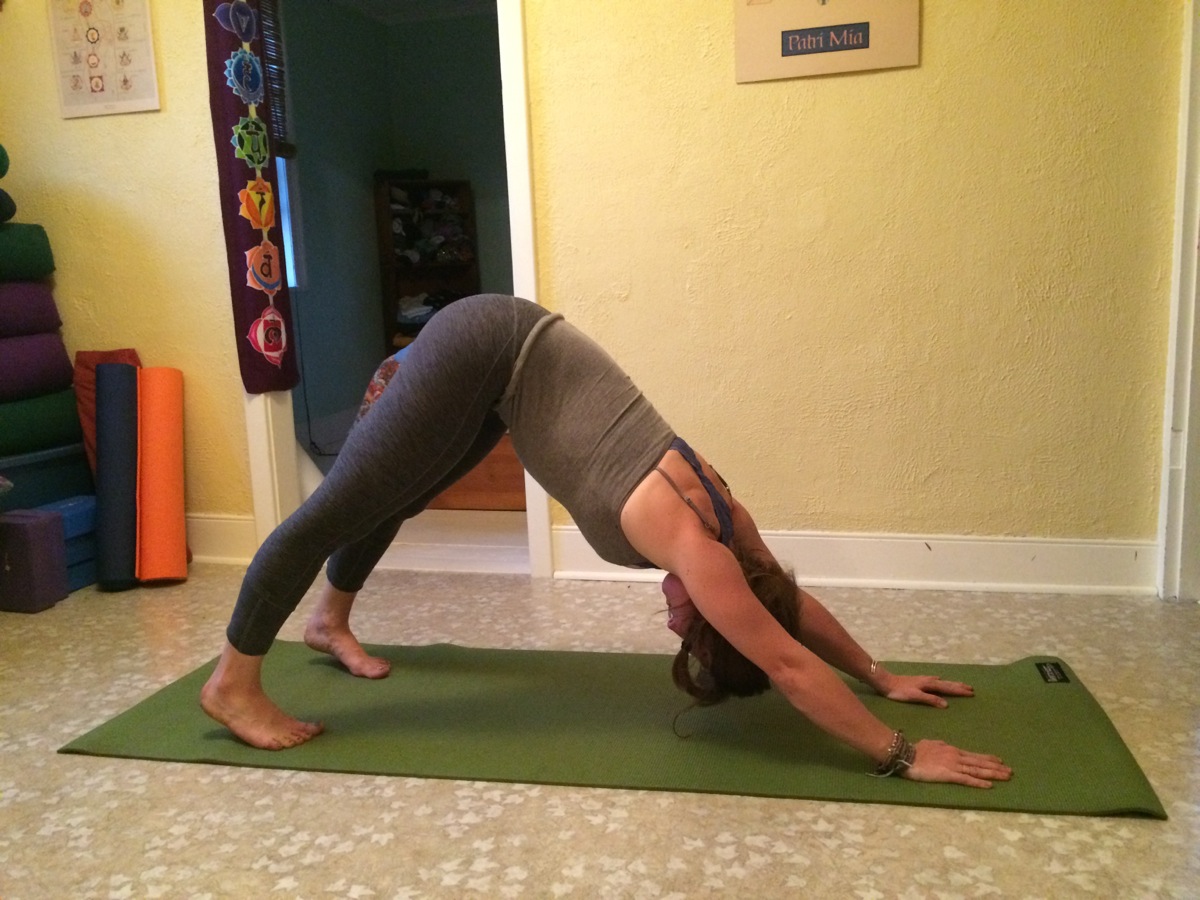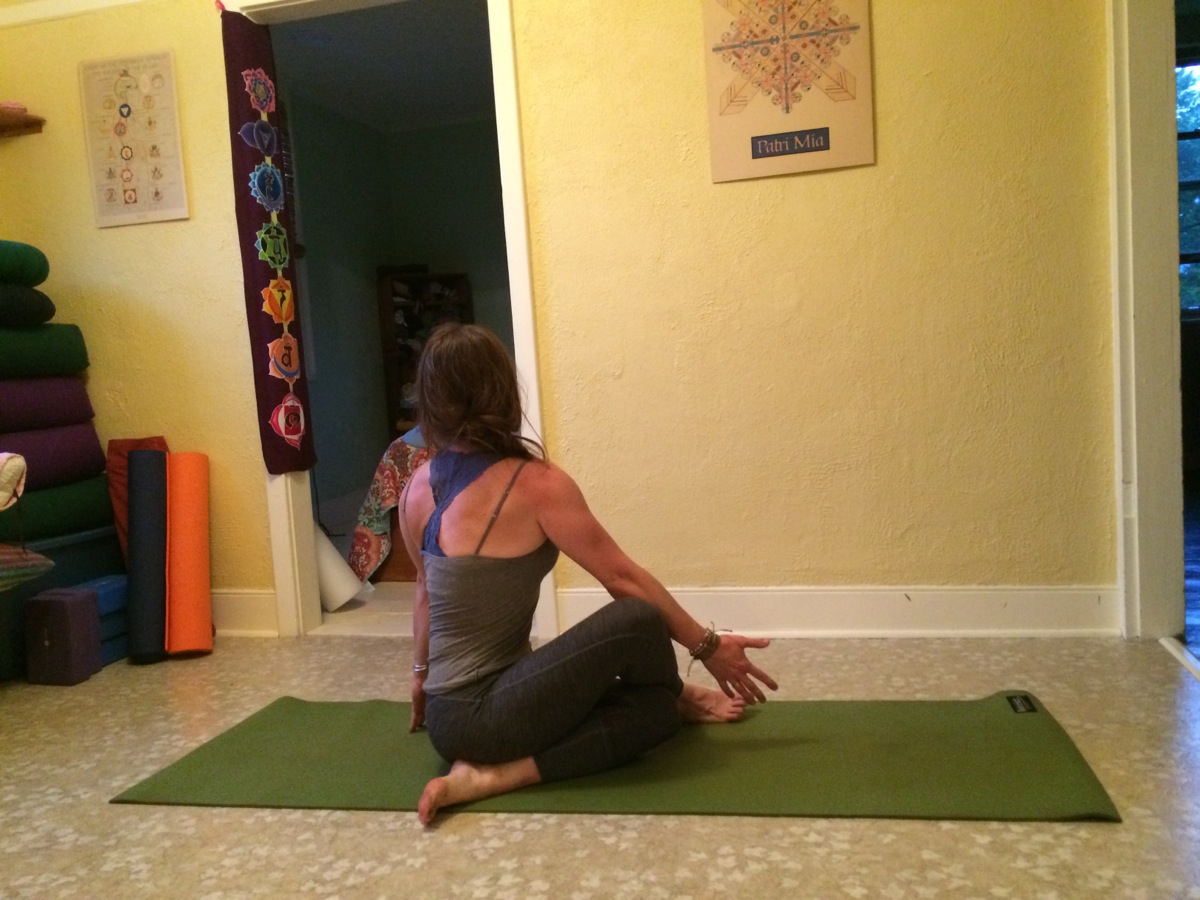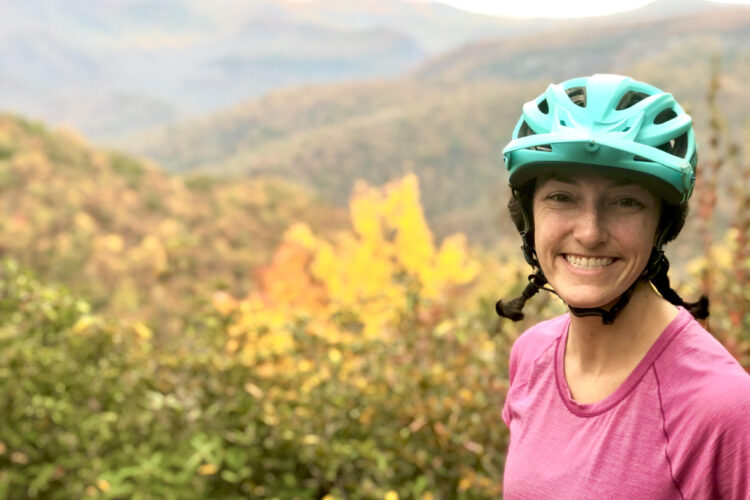Over the past couple of years, I’ve begun to notice that I can no longer beat my body up and expect no consequences. Like it or not, it’s a part of getting older. After a hard ride, I really feel it the next day: my back hurts, my hips get tight, my shoulders get sore.
Luckily, I’ve also discovered that there’s a way to mitigate and even eliminate that pain and speed up the recovery process in between rides: do yoga.
I’ve found that stretching and practicing yoga for just 10-15 minutes a day does wonders for improving my flexibility and balance. Yoga also helps you become more focused, which can certainly be helpful for tackling tough rock gardens! It also helps build strength in muscles that may be underdeveloped, and helps balance out the body.
Here are just a few of the yoga poses that I’ve found to be helpful:
1. Child’s Pose
This pose is relaxing and helps calm the mind, and it’s a nice one to start out with to get into the mindset of stretching and winding down after a hard ride. It is a great stretch for the lower back, which tends to get tight after long hours in the saddle. I find that it’s also a nice position to ease into in between other stretches to “reset” the spine.
Begin in a kneeling position, butt on your heels, with your feet together and your knees slightly spread. Lean forward, resting your stomach on your thighs, stretching your arms in front of you, and placing your forehead on the floor.
2. Downward Dog
Downward, or “Down” Dog, is probably one of the most well-known and iconic yoga poses, and for good reason. It is a great way to stretch nearly the entire body (back, shoulders, neck, hamstrings, calves, wrists, and feet), but it also does much more. This pose is naturally energizing, and has been proven to help restore energy after a hard workout. It also helps promote blood circulation, strengthen the core, and relieve stress. Yogis like using this posture as a “resting” pose, because it offers an opportunity to take stock of your body–what feels good, or what hurts and might need some work.
Begin on your hands and knees, aligning your wrists under your shoulders and your knees under your hips. Tuck your toes, lift your knees off the floor, and press your pelvis upward, elongating your back, arms, and legs. Relax your head and neck without allowing them to dangle. Engage your entire body–arms, core, and legs–and hold for as long as feels comfortable. This is another good pose to keep coming back to in between other stretches, and it incorporates strength building into your stretching routine.
3. Rag Doll
Another pose that I’ve found is excellent for easing back pain is the Rag Doll. Stand with your feet shoulder-width apart, and bend forward, letting your head, neck, and arms dangle. Relax and allow gravity to do the work. You can then ease into a forward bend and grab your feet with your hands for an even deeper stretch of the back and legs.
4. Seated Twist
There are many variations of this pose, but regardless of how you choose to execute it, the benefits remain the same–stretching and strengthening the hips, spine, and shoulders. It reduces neck and back pain and helps build flexibility through the spine. There is a certain spot in my mid-back that always tends to hurt and get tight after a long ride, and I’m finding that this is the perfect stretch to ease that tightness and, over time, help reduce its occurrence.
5. Thread the Needle
Thread the Needle opens up the shoulders and chest, and relieves tension that builds up in the upper back and neck.
Begin on your hands and knees, and bring your right arm across your body under your chest. Rest your hand on the floor with the palm facing up. Lower your upper body, resting your head and neck on the floor, keeping your left arm outstretched in line with your body. Keep your head facing to the left (towards the hand that is stretched beneath your torso). You can now either hold this pose as is, or lift your left arm off the ground and reach towards the sky, finding the position that offers the deepest stretch without being painful. Release and switch arms.
6. Hamstring Stretch
This one is currently my favorite. Lying down on the floor and stretching out the hamstrings and opening up the hips after a hard ride feels so good!
Lie flat on your back, legs outstretched towards the sky. Place your right ankle just above your left knee and grab the back of your left leg, pulling it towards your chest. You can keep your left leg straight, or you can bend it at the knee, letting your lower leg dangle. Allow your right hip to open up more and more as you draw the left leg towards you. Hold this pose for a minute or two, gradually deepening the stretch. Release and switch legs.
7. Pigeon
Pigeon is a good follow-up to the Hamstring Stretch, as it further loosens the hips, thighs, hamstrings, and lower back. Over time, it will increase the range of motion in the hips and lengthen the hip flexors.
Begin on all fours. Slide your right knee towards your right hand, folding your right leg beneath you while extending your left leg straight behind as far as you can. Keep your hips square to the floor. You can keep your torso upright if you’d like, or you can bend forward and rest your forehead and arms on the floor in front of you, which will offer a deeper stretch. Keep your left thigh rotated slightly inward to avoid putting pressure on the kneecap. Hold for as long as you’d like, then switch legs and repeat.
8. Garland Pose
This yoga pose opens up the hips and stretches the groin, ankles, thighs, and torso. It also helps with balance, concentration, and focus, which is always useful on the bike.
To begin, squat with your feet as close together as possible, then spread your thighs and lean forward, fitting your body between your legs with your elbows forward. Press your elbows against your inner knees, pushing outward as you bring your palms together. Hold as long as you can.
This is by no means a complete list of yoga poses that are beneficial to cyclists–it’s only the beginning!
Special thanks to my yoga teacher friend Carissa Milliman for her input on this article, and for agreeing to be my model.
Your turn: Do you practice yoga to help with cycling? What are some of your favorite or most beneficial postures or stretches?































